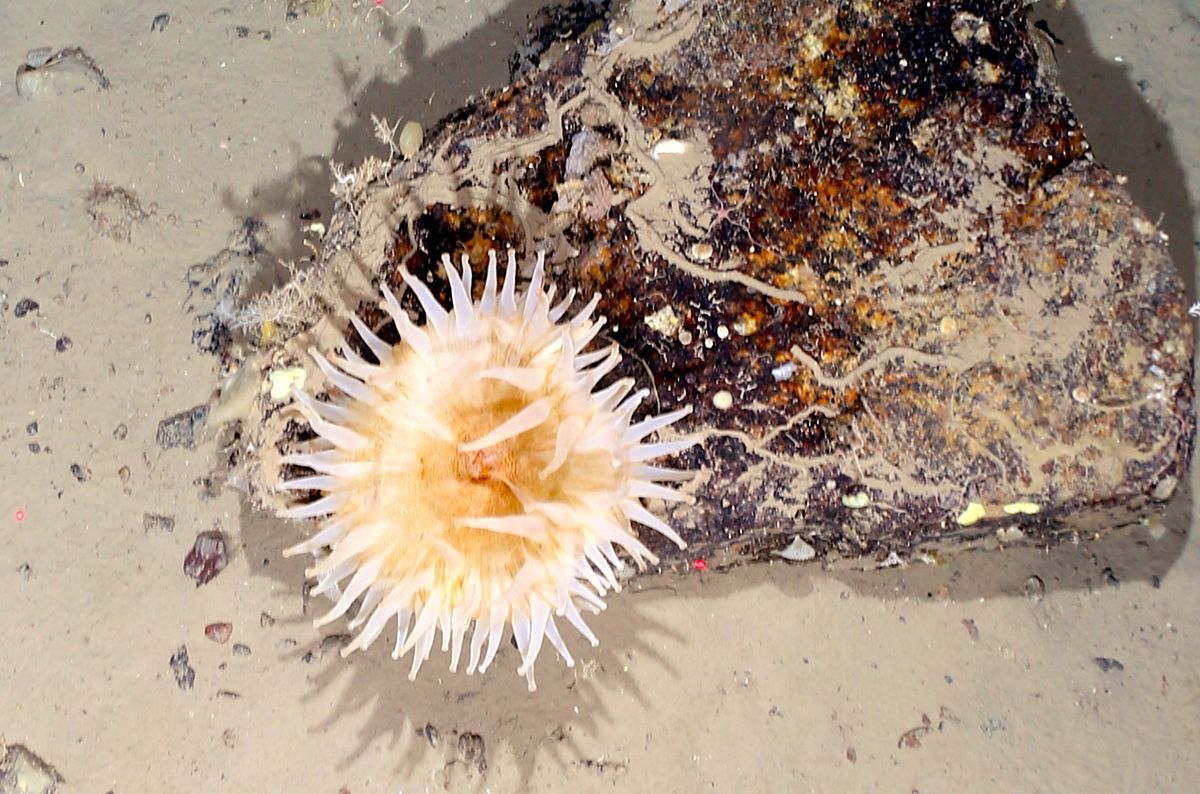
About two weeks ago, an iceberg large enough to hold New York City nearly two times over cracked off of the Antarctic Ice Sheet and began drifting slowly through the Weddell Sea. Now, researchers have gotten a rare glimpse at the marine life living deep below the ice — finally exposed after five decades of ice cover.
Cruising through the narrow gap between the newly-liberated iceberg, named A-74, and the Brunt Ice Shelf in northern Antarctica, the German research vessel Polarstern took hours of footage and thousands of photos of the reclusive creatures living 18 miles (30 kilometers) below the surface. The researchers discovered a bustling community of mollusks, filter feeders, sea stars, sea cucumbers, and at least five species of fish and two squid species, they reported.
"The first images from the seafloor reveal an amazing level of biodiversity in a region that was covered by thick ice for decades," researchers with the Alfred Wegener Institute for Polar and Marine Research (AWI) in Bremerhaven, Germany, which is in charge of the Polarstern mission, said in a statement.
Related: Creatures of the frozen deep: Antarctica's sea life
It's not unusual to find marine life thriving near the Antarctic seafloor. Hundreds of marine species live in the frigid waters; sometimes in truly unexpected places. Last month, researchers discovered a colony of sea sponges and other stationary filter feeders clinging to a rock 3,000 feet (900 meters) below the Filchner-Ronne Ice Shelf, near the Antarctic Peninsula.
That discovery, like the Polarstern's new survey of the Weddell Sea floor, threw researchers for a bit of a loop, mainly due to the presence of stationary filter feeders. These animals (which include corals and sponges) perch in place and wait for nutrients to come to them, usually in the form of phytoplankton — a type of microscopic marine algae.
Phytoplankton rely on sunshine for photosynthesis and tend to float in the upper part of the ocean, where the water is sunniest, according to the National Oceanic and Atmospheric Administration. So, finding communities of phytoplankton-gobbling sea creatures living in the darkness deep below the Antarctic ice is counter-intuitive, to say the least.
Somehow, nutrients — either in the form of phytoplankton or organic particles flushed to sea with the ice above — are being dragged thousands of feet below the ice shelves of Antarctica to feed the bottom-dwelling creatures there, according to the AWI researchers. To learn more about the region's ecosystem, the research team gathered sediment samples from the sea floor, which will help reveal the water's nutrient content.
The team also stationed some research buoys in the area to gather data about the water's temperature and salinity, as well as ocean current speeds in the Weddell Sea. This data will help scientists build more accurate climate models for the region, the researchers said. Antarctica is one of the fastest-warming parts of the planet, and is at risk of losing most of its ice permanently if greenhouse gas emissions aren't curbed this century, Live Science previously reported.
Originally published on Live Science.
The Link LonkMarch 20, 2021 at 12:28AM
https://ift.tt/30YwDUF
Scientists uncover Antarctic sea creatures 'trapped under ice' for 50 years - Livescience.com
https://ift.tt/2CoSmg4
Sea
/cloudfront-us-east-2.images.arcpublishing.com/reuters/CZF6NULMVVMEXHOP7JK5BSPQUM.jpg)
No comments:
Post a Comment